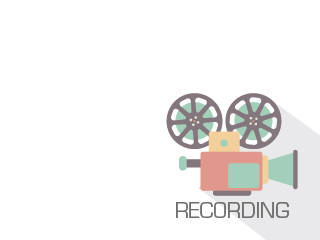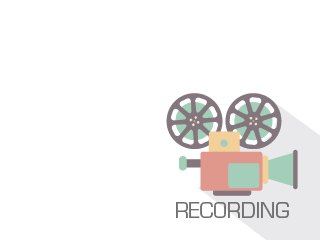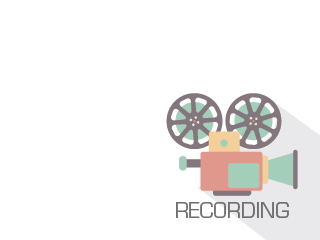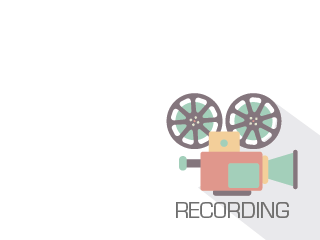All Resources

Micro-Compliance Solutions to Reduce Time and Length of Courses
Huge investments are made on compliance courses to meet the demands of regulations, teach learners guidelines and avoid legal liabilities. The challenge is that compliance takes an enormous amount of time and does not necessarily accomplish the results.

Flipping: Making (More) Passive Content Valuable
There is plenty of talk about flipping training and then there is research on what works. Typically, more passive content is what people use on their own and more active content is saved for face-to-face delivery.

Taking Your Performance Consulting Business to the Next Level
So you are a consultant. Do you have a business? Or is it a practice? Do you have passive revenue? Or do you only generate revenue when you are working? Do you want passive revenue? In this session Bob will share the steps he used to move from a practice to a multimillion dollar business.

Develop Your Innovative Thinking Skills
Discover how a Whole Brain® approach can transform the ideation process.
Explore some of the specific Whole Brain® ideation, experimentation and problem-solving processes the team used.
Learn how this global liquor giant was able to come up with and successfully implement a number of groundbreaking new marketing ideas by injecting Whole Brain® Thinking into their innovation process.
Find Out how the "killer" marketing ideas that resulted from the Whole Brain® approach directly led to increased merchandising sales that outperformed the competition, as well as double-digit brand growth.

6 Ways to Elevate Your New Hire Onboarding - Using Virtual to Engage, Equip & Energize
Does your onboarding program leave your employees energized and excited? Or do they see it as a boring required chore? Would you like your new hire onboarding to be more interactive and engaging?

Prepare and Present Compelling Webinars: Tips to Amplify Your Webinar Message
This two-part webinar hosted by Matt Abrahams, Stanford lecturer and author of Speaking Up Without Freaking Out, provides a hands-on, practical introduction to techniques that will help you develop and deliver engaging, participative and impactful webinars.

Becoming Your Organization's Chief Change Officer
The marketplace is changing, and the way you lead must change too.
Leading through change.
You can’t expect your people to change if the leaders are not willing to go first. To drive change, you must help your people understand the changing marketplace, the strategy to address that change, and the important role each plays in delivering that strategy. This typically requires new thinking, new behaviors, and new processes. If you aren’t modeling those changes then you can’t expect your people to do it.

I Learned It, But Now I’ve Forgotten It . . . How Micro-Video Can Drive Learning Retention
Delivering learning to employees is only the first key step in improving performance. Employees have to retain the gains in knowledge and skill, or the time, energy and effort that went into the program was for nothing - wasted. Delivering learning to employees is only the first key step in improving performance. Employees have to retain the gains in knowledge and skill, or the time, energy and effort that went into the program was for nothing - wasted. The challenge for many organizations and professionals is that we focus so intently on employee learning, we overlook the importance whether our employees retain any of what they learn. As it turns out, reinforcement of lessons learned is a powerful part of learning and vitally important.

Attract, Develop, and Retain a 21st Century Workforce
Is your business prepared for the way we’ll work in the future? To stay ahead of the competition you need a proactive, integrated approach to your entire talent management lifecycle.
SuccessFactors offers a full suite of talent solutions
to help you:
Attract,engage,select, and hire the right talent
Get your new hires up to speed in record time
Provide continuous performance management
Reward and retain your top talent
Identify and anticipate talent gaps
Provide learning anywhere, any time
Get content as a service
Harness the power of collaboration

The Happiness Advantage at Work Part 3: Embedding Happiness into Your Leadership and Culture
Research featured in Harvard Business Review show improvements in happiness and well being associated with positive outcomes in employee engagement (up to 10x more engaged) and higher levels of sales (37% average increase across multiple studies). Social support was shown to improve not only levels of employee satisfaction - but also lead to improvements in customer loyalty and industry service metrics.

Reduce Turnover, Increase Productivity and Maximize the Success of Your New Employees
New employees offer promise and potential for their employers. In order to be successful, they must acclimate quickly to their new organization’s culture, structure, policies, procedures, and job expectations. If this does not occur, the promise of a new employee can quickly become a liability. Further, employees who are new to an organization, generally consume more resources then the value of their productivity (Rollag, Parise, & Cross, 2005). It is critical for organizations to experience a return on their investment by means of increased productivity over time. This will not happen if new employees fail to reach full productivity or leave the organization before they have an opportunity to contribute in a way that affects the organization’s performance outcomes and bottom line (Chang, Ehrlich, & Millen, 2004).

7 Ways to Increase Your Credibility and Visibility as a Consultant
All consultants are not created equal. And all consultants do not earn the same amount of money. And some consultants know more -- and get paid less. Why?

Micro-Video IS Training – Learn How to Make the Most of It
In this session, you’ll learn about some of the latest emerging neuroscience and behavioral science about how humans really learn. What the empirical data tells us is there are amazing connections between the reality of learning and video, especially micro-video. Some of what we think we know about human learning is simply mistaken.

Leverage Video to Create High-Converting Sales Proposals
The standard, oral sales proposal is dead. Salespeople know it, and they’re increasingly turning to different presentation approaches as a result. But no matter the platform, it’s easy to forget that the content you develop isn’t just about you - it’s about your audience…their pain points, requests, questions, you name it. We know that prospects who receive tailored content are 40 percent more willing to buy. So, how can you develop a personalized proposal that will make every client feel like a big deal?

Training and Coaching Strategies for Unwilling Participants
This session will provide specific strategies and methods to ascertain who we should train and coach.
For far too long we have shuffled people down to the training department for employees to be trained. On the other hand what we are we to do as manager or trainers when employees are unwilling participants? Employees have a huge responsibility in their development.

10 Ways to Ruin Your e-Learning: A How-To Guide in Reverse
In many professional areas, it is usually a good strategy to look to common practices in the field as a guide - maybe not for the most cutting-edge ideas, but at least for reliable models to follow. Unfortunately, in e-learning this can often be a recipe for disaster.
Leveraging Iterative Development for Instructional Design
Successive approximation, rapid prototyping, agile methods… they all call for iterative development. With each iteration you take a product out to the learners and gather new input into your designs. Does this completely mess with everything we’ve learned about the ADDIE model? How do you know when to stop iterating? How do you convince your project sponsors to go along? Is this just an excuse for releasing shoddy work?

Introduction to Facilitating Groups: Best Practices in Group Facilitation
At some point, even experienced trainers, facilitators and managers find themselves standing before groups whose dynamics are all over the board. Everyone is expressing an opinion, ideas are flying at warp speed, emotions are high, disagreement is rampant, and some participants in your group are shutting down - while others are rebelling against the process. Wouldn’t it be great to have the tools that allow you to regain control and confidently lead your group to effective results?

Improve your Virtual Presence: Tips to Transform Your Training and Engage Your Audience
Learn how to fine-tune your content, incorporate virtual tools and adjust your delivery style to improve your virtual presence, transform your online training and engage your audience.

The Happiness Advantage at Work Part 2: Changing Social Scripts to Positive
What makes happiness at work so hard? The truth is that happy cultures are difficult to build and sustain. First, organizations must change the powerful social scripts that inadvertently undermine positive environments and behaviors. Second, business priorities must demonstrate a real commitment to happiness as a strategy for success.

5 Myths About Measuring Training’s Impact and Why They’ll Get You Into Trouble
There are a number ideologies and beliefs on how to best measure the impact of training. As a result, it can be difficult to distinguish myths from best practices. During this webinar, our prominent measurement experts will provide "practitioner-focused" solutions for the most common misconceptions about measuring business impact.

Captivate Features, Tips and Tricks That You MUST Know!
It's easy to get started with Adobe Captivate but there's a lot of power under the hood! Some features are not well known but the more you know them, the better your instructional design will be. Using the layers of sophistication of these features means you will save a lot of time, deliver more engaging and personalized learning, and be able to tap into resources more easily. Joe Ganci, a Certified Adobe Captivate expert, and Dr. Pooja Jaisingh, an Adobe Evangelist, will take you through the Captivate features you need to make the most of this powerful tool.

 Workshop Tip #59: The Brain and the Stories We Tell: Top Reasons Why Stories Change Our Behavior
Workshop Tip #59: The Brain and the Stories We Tell: Top Reasons Why Stories Change Our Behavior
Stories in our brains boost learning.

Are You Prototyping Your Future eLearning? Or Are You Still Designing for the Past?
Experts say we are now in our third generation of eLearning. During the first, we were able to upload PDFs and PowerPoint files and let our learners study online. The second generation featured rapid authoring software, which allowed us to breeze through and add narration and interactive elements, along with some other really cool stuff. Now, for the third generation, we have an abundance of options ranging from blended, social, gamification, and cloud to TINCAN, among many others.













